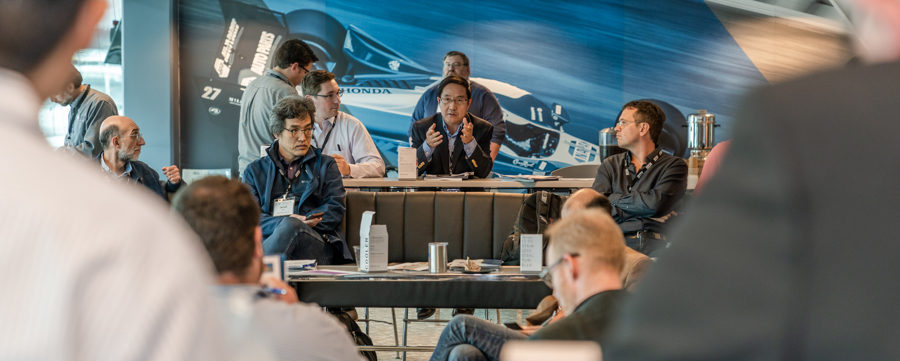Milking It in Indianapolis
Could driverless race cars come to the Indianapolis Motor Speedway?
Posted On: July 11, 2019 By :Typically, a car hurtling along the roadway without a driver at 200 miles per hour would be terrifying—a horrendous accident in the making. But what if such a car could help prevent accidents and ensure highway safety for all?
That’s what more than 20 researchers from prestigious institutions set out to answer when they gathered at the Indianapolis Motor Speedway in May. Led by Energy Systems Network, an economic development nonprofit based in Indiana, the team explored the possibility of IMS hosting a driverless competition in the future. The effort included testing how high-speed autonomous vehicles might be controlled and stabilized while moving in close proximity, possibly saving lives in real-world driving scenarios.
“The Indianapolis Motor Speedway was conceived and built more than 100 years ago as a proving ground for automotive innovation and discovery,” said IMS President J. Douglas Boles. The gathering at the speedway, he said, provided the opportunity for IMS to “again serve as a catalyst for the next generation of vehicle technologies in both motorsports competition and wider consumer platforms.”
Sponsored Content
According to Matt Peak, director of mobility at ESN, staging the workshop at the International Motor Speedway represented an ideal synergy of an iconic, historic race venue celebrating its 110th anniversary this year and the future of innovation in autonomous vehicle technology. ESN reached out to more than 60 universities and companies—including the University of Waterloo in Canada, the Korea Advanced Institute of Science & Technology and the Toyota Mobility Foundation—and received an incredible response.
“With IMS, we felt the time was right to bring innovators and prospective teams together in one room, to gather thoughts and feed off one another’s energy,” said Peak. “What better time than during the festivities of the Indy 500 track?”

Competition advisor Reilly Brennan of Stanford’s Center for Automotive Research said competitions such as these can reveal new thinking, new collaborations and new talent—harkening back to 15 years ago, when the first DARPA Grand Challenge helped inaugurate the modern autonomous vehicle industry by offering a $1 million prize to the team that could first complete a course in the Mojave Desert. “It kick-started an important wave of innovation in automated vehicles that spilled over into the private sector and reinvigorated the research community,” Brennan said. “I believe a new competition focused on high-speed automated vehicles has the potential to do the same.”
Will a new autonomous competition mean human drivers will lose their role in the traditional brick-kissing, milk-drinking spotlight of the Indy 500? Not so fast, say organizers. “We’re keeping people front and center, with all the sights, sounds and speeds of motor sport,” said Peak, pointing out the recent workshop is separate from the event that’s drawn millions of fans during the past 100-plus years. The emphasis was also on translating the act of keeping a driverless racecar stable at 200 mph, and how that might translate to highway speeds of 65 mph.
“We had overwhelming support and enthusiasm,” said Peak of the May event. The next steps are aggregating the teams’ data and completing financing for the future of self-driving technology.
Race cars slowing down the injury rate in real-world scenarios while remaining highly entertaining? We’ll drink (milk) to that.
By the Numbers
1909: The Indianapolis Motor Speedway opens as a test track for the automotive industry.
1911: The first Indy 500, the first mass rolling start of a race and the first use of a pace car
1921: The first use of four-wheel hydraulic brakes at IMS
1935: The first installation of color warning lights and the first mandatory use of helmets
1993: The first use of crash-data recorders
2002: A steel and foam energy reduction (SAFER) barrier is applied to the track’s four turns
2035: Connected and automated vehicle (CAV) industry is expected to be worth $800 billion
2050: CAV industry is expected to be worth $7 trillion
Presented by
